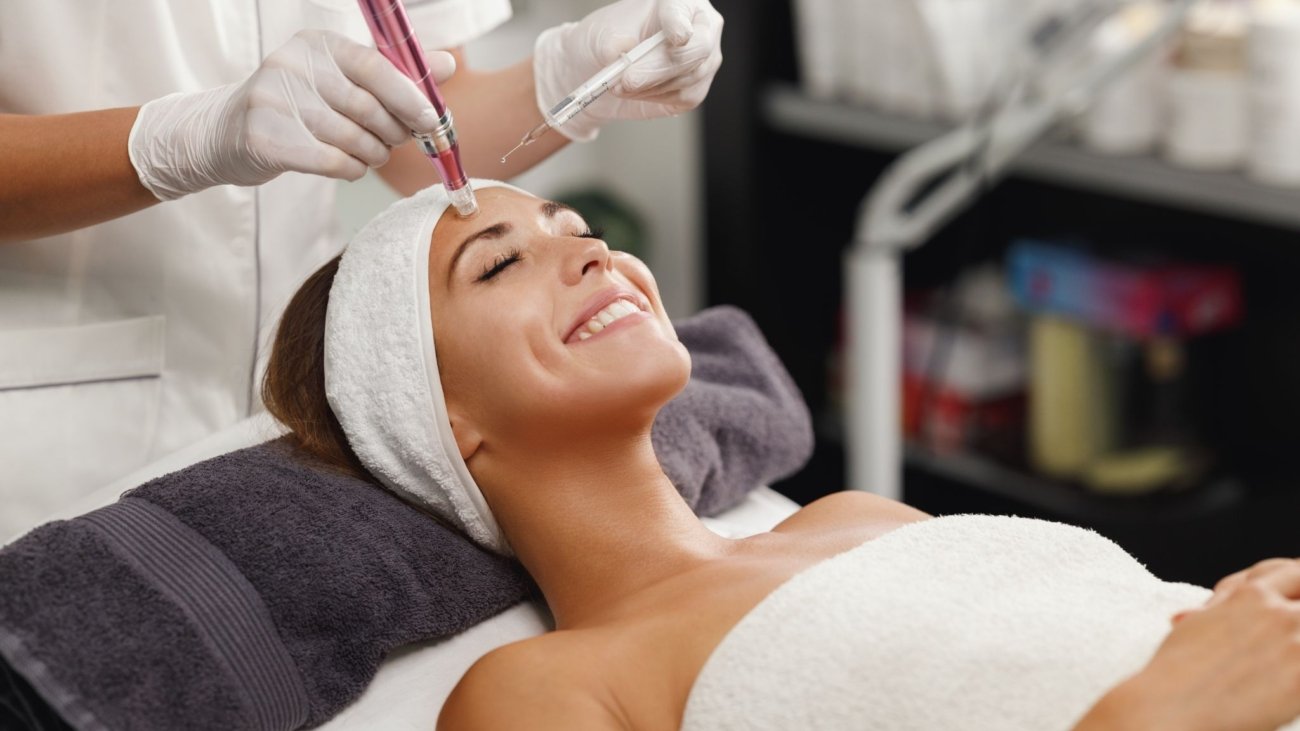Microneedling vs. Microchanneling in the Beauty Industry: Unraveling the Differences
Nowadays In the beauty industry, the terms “microneedling” and “microchanneling” are creating quite a buzz. As individuals increasingly seek innovative skincare solutions, understanding the nuances between these two procedures becomes imperative. This article delves into the intricacies of microneedling and microchanneling, highlighting the key disparities that set them apart.
Microneedling:
Microneedling, also known as collagen induction therapy, involves the use of fine needles to create controlled micro-injuries on the skin’s surface. This process stimulates the body’s natural healing response, triggering the production of collagen and elastin—the building blocks of healthy skin.
Procedure and Benefits
Process Overview
The microneedling process typically begins thorough cleanse of the skin following with a special serum application. A derma roller or a motorized pen-like device equipped with tiny needles is then used to make controlled punctures. These micro-injuries prompt the skin to regenerate, resulting in improved texture, tone, and a reduction in the appearance of scars and fine lines. A calming soothing sheet mask will be applied afterwards brining even more nutrients through still opened channels following by a moisturiser with SPF protection.
Advantages of Microneedling
- Collagen Boost: Microneedling promotes collagen synthesis, leading to firmer and more youthful-looking skin.
- Versatility: Suitable for various skin types and concerns, microneedling addresses issues ranging from acne scars to enlarged pores.
Microchanneling:
Microchanneling, on the other hand, introduces a unique approach to skincare by employing a revolutionary device known as a microchanneling pen. Microchanneling is the next evolution of microneedling. It uses a silicone microchip to create microscopic channels for up to 97% serum penetration in the skin.
Procedure and Benefits
Process Overview
During a microchanneling session, the pen creates minuscule channels, allowing serums enriched with vitamins, peptides, and growth factors to penetrate deeply. This process enhances the absorption of these nourishing ingredients, promoting optimal skin rejuvenation.
Advantages of Microchannling
- Enhanced Absorption: Microchanneling maximizes the absorption of skincare products, ensuring their effectiveness.
- Reduced Downtime: Compared to some traditional skincare treatments, microchanneling normally doesn’t have any downtime.
Choosing the Right Procedure
Microchanneling, on the other hand, introduces a unique approach to skincare by employing a revolutionary device known as a microchanneling pen. Microchanneling is the next evolution of microneedling. It uses a silicone microchip to create microscopic channels for up to 97% serum penetration in the skin.
Skin Concerns
Understanding your specific skincare needs is crucial in determining whether microneedling or microchanneling is the better fit. Microneedling may be preferable for those seeking overall skin rejuvenation, while microchanneling could be ideal for targeted concerns with enhanced product delivery.
Downtime Tolerance
Considering the downtime associated with each procedure is essential. While microneedling may involve a brief recovery period, microchanneling tends to have a shorter downtime to no downtime, making it a more convenient option for individuals with busy schedules.
Conclusion:
As the beauty industry continues to innovate, both microneedling and microchanneling offer promising solutions for achieving radiant and healthy skin. Choosing between these procedures depends on individual preferences, skin concerns, and the desired level of downtime.

